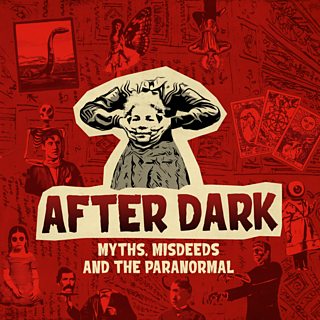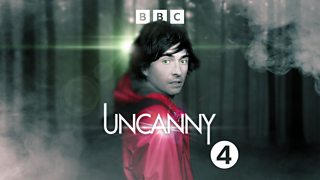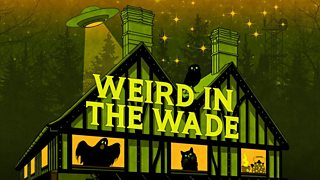Loch Ness: The Monster, the Myth, and the Mystery
What lurks beneath the dark waters of Loch Ness? The legendary monster? A piece of Celtic folklore? A warning of the Nazis' rise to power? A fraudster?
In this episode of After Dark, Anthony Delaney and Maddy Pelling examine grainy photographs, pick over descriptions of monsters and try to work out what it all means.
Here are some of the things we learned about the mysteries of the deep…
1. Loch Ness is VERY deep.
In fact, it has more water in it than all of the lakes in England and Wales combined. “You think about how deep that water is, and it's no surprise that people imagine things there,” says Maddy.
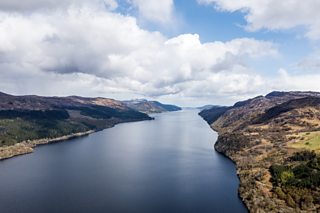
2. The story of a monster in the local area is an ancient one.
The first story of a monster came from nearby, in the River Ness, which adjoins the Loch, in the year 565 from St Columba. Columba was on a mission to Christianise the area. This particular monster, the story goes, had attacked swimmers in the river. Anthony explains: “One swimmer – don't ask me why he was in the river – was attacked by the monster. St Columba entered the river and made the sign of the cross and dared the monster to go no further. And the monster fled.” Of course, the likelihood that this event happened is incredibly slim, Maddy and Anthony agree – it’s more of a metaphor for the triumph of early Christianity over the untamed landscape of the Highlands.
3. The next monster sighting came in the late 19th century.
It appeared in 1871, and was seen by a Mr McKenzie. “We don't have much details about this particular sighting,” says Anthony. “It wasn't taken particularly seriously at the time, but Mr. McKenzie apparently saw something wriggling and churning up the water.” Anthony suspects this might have had something to do with encouraging Victorian tourists at the time. “I wonder if what Mackenzie is doing actually is piquing people's interest, drawing them into the landscape and saying, hey, look, there are things to be discovered here. It's a way of bringing a bit of ambiguity or magic to a place that people are visiting with more regularity.”
4. The Loch Ness legend ramped up in 1933.
On 15 April of that year, the Inverness Courier reported that Aldie Mackay, a local businessman and his wife, who remained nameless in the article, were motoring along the north shore of the great Loch Ness when they saw the monster “rolling and plunging” in the water. The monster, they said, had the body of a whale – which was a detail McKenzie hadn’t mentioned. Maddy explains: “There's this idea that Loch Ness was potentially joined to bigger oceans in prehistoric times, and therefore that some of the huge sea monsters that people imagine, you know, from the prehistoric world, may have survived in some way. So they're kind of tapping into that idea.”
5. The monster was described as ‘like a dragon’.
Three months later, in July 1933, one Mr G Spicer of Golders Green said he saw “The nearest approach to a dragon or prehistoric animal that I have ever seen in my life. It crossed my road about 50 yards ahead and appeared to be carrying a small lamb or animal of some kind. It seemed to have a long neck, which moved up and down, and the body was fairly big with a high back. When we got to the spot, it had probably disappeared into the lock length from six feet to eight feet, and very ugly.” Spicer gave interviews about his sighting in several British newspapers.
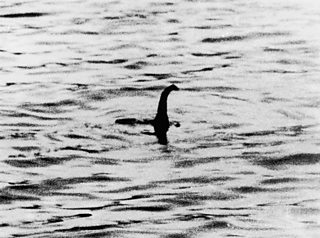
6. The first ‘photograph’ of the monster emerged in November 1933.
It was taken by a man called Hugh Gray. It is not that famous image of the head poking up out of the water, but a close up of a body of water, in black and white. Maddy isn’t convinced. “It looks to me like a small wave created by throwing an object into the water,” she says.
7. A monster hunt was launched in 1934.
Sir Edward Mortimer mountain launched the first substantial investigation into the Loch Ness monster, employing 20 men with box cameras. They assumed strategic positions across the loch from 9am to 6pm each day for five weeks, beginning on the 13th of July. Over 21 pictures were obtained. “The quality of the 21 pictures that were obtained are absolutely abysmal,” says Anthony. “It's really interesting that they chose between 9am and 6pm to be there, when, actually, the other sightings are taking place at night.”
8. The Loch Ness monster has become an industry.
Maddy explains: “In 2014 there were businesses in the highlands that were actually being offered free advice on how they could cash in on the Loch Ness Monster and other monstrous myths. And even in Edinburgh, you'll see endless Loch Ness Monster merchandise. So this is absolutely something that people continue to make money out of in all sorts of ways.”
You can find out more about the Loch Ness monster on After Dark: Myths, Misdeeds & the Paranormal on ÃÛÑ¿´«Ã½ Sounds.
More from the ÃÛÑ¿´«Ã½
-
![]()
Loch Ness: They Created A Monster
The unbelievable story behind the Loch Ness Monster, and how the search for it has attracted people from across the world for decades.
-
![]()
Uncanny
From ghostly phantoms to UFOs, Danny Robins investigates real-life stories of paranormal encounters.
-
![]()
Weird in the Wade
Weird in the Wade brings you true tales that are weird, wonderful and a little off kilter
-
![]()
Short History Of...
Witness history's most incredible moments and remarkable people.
